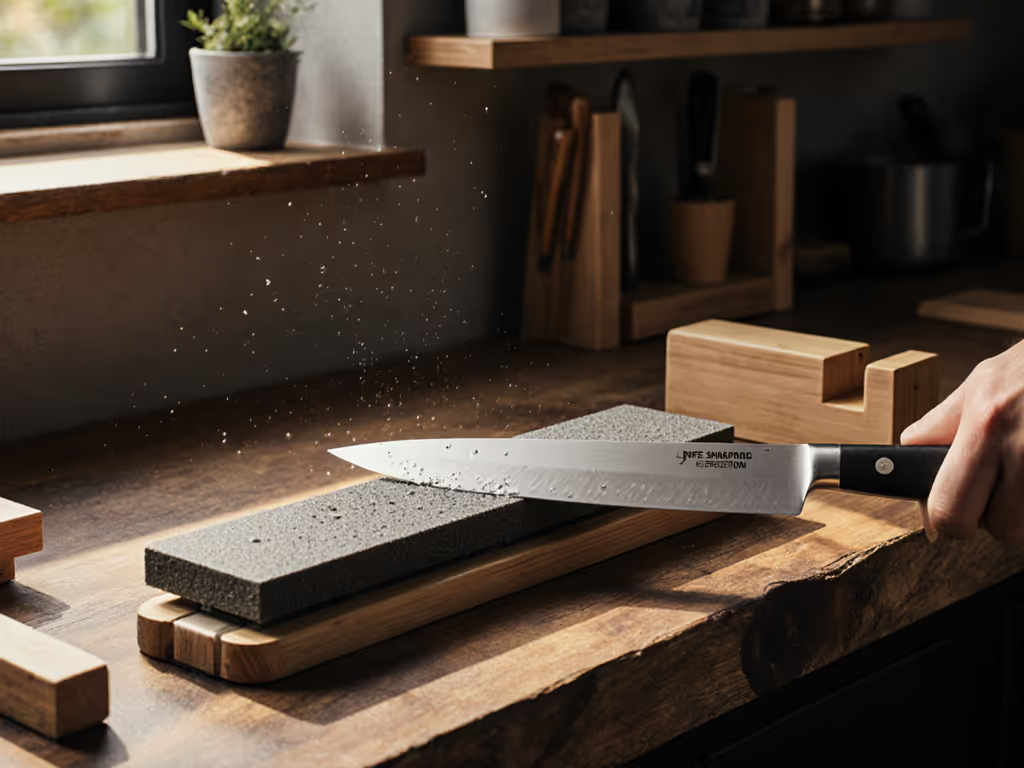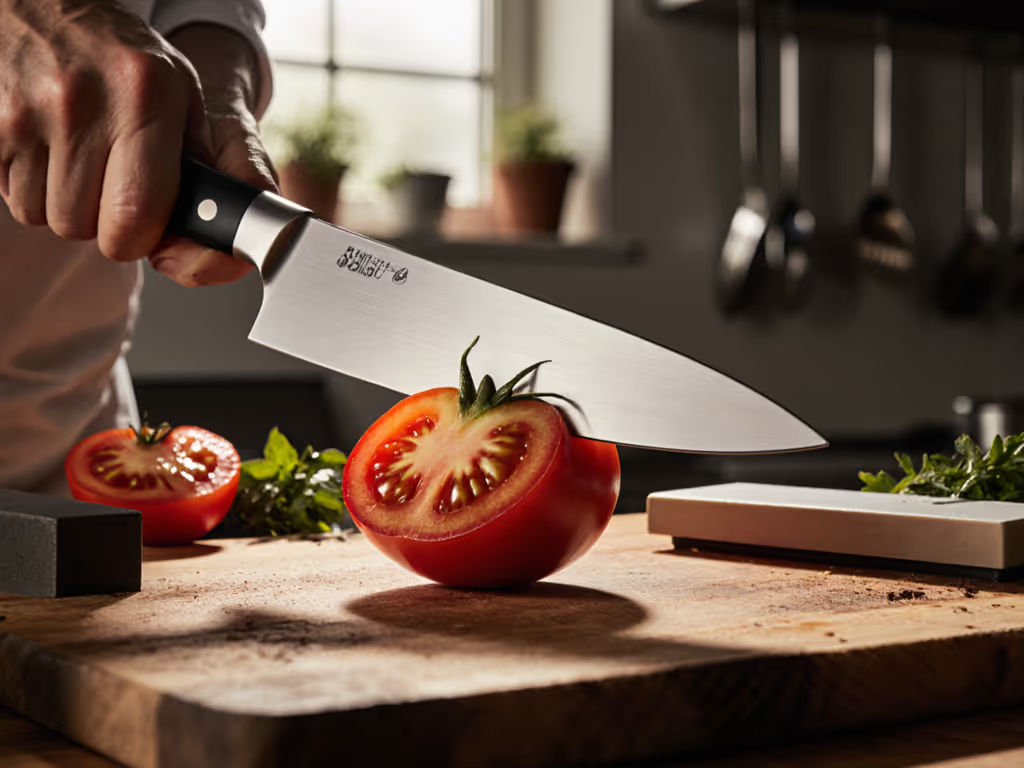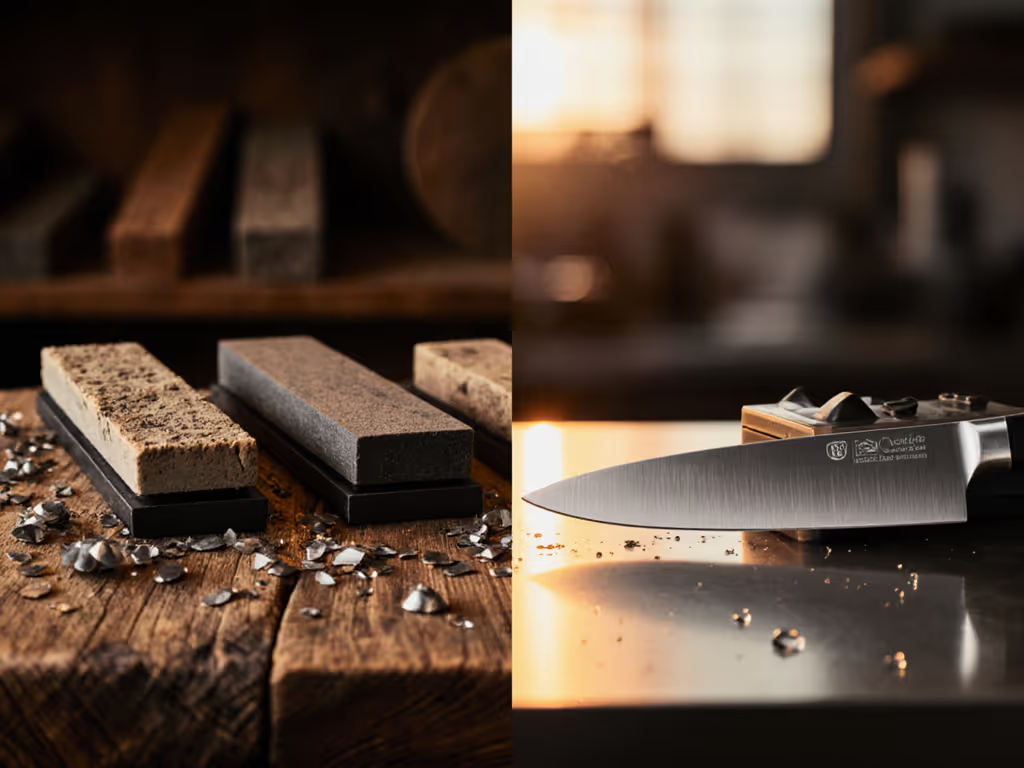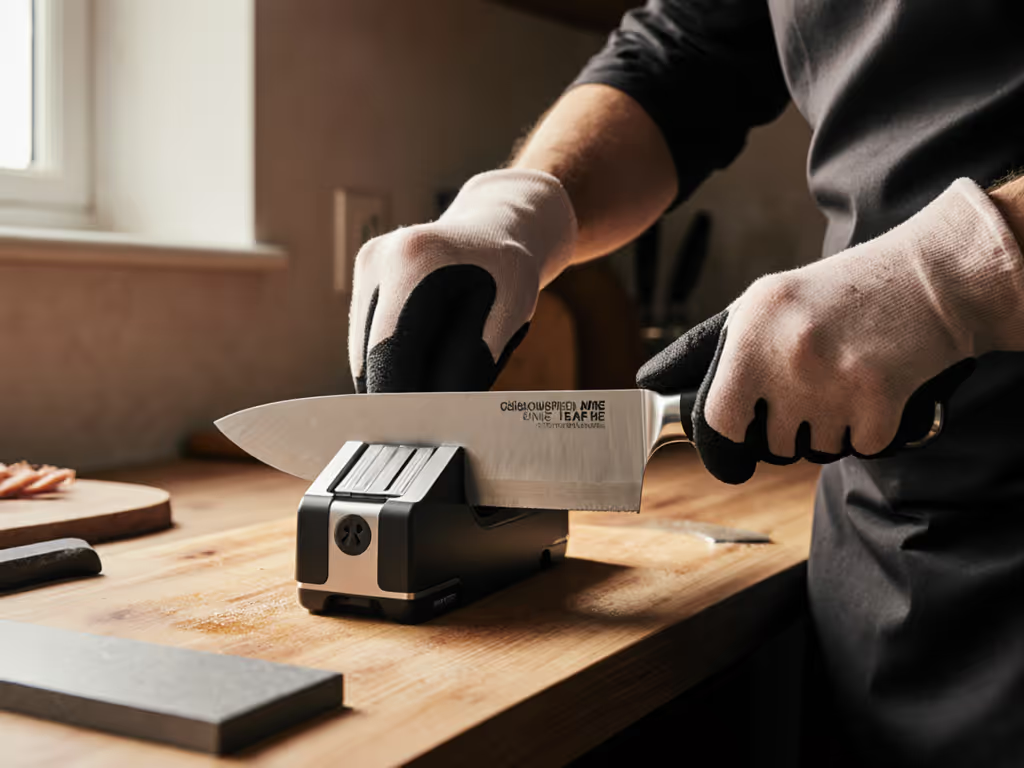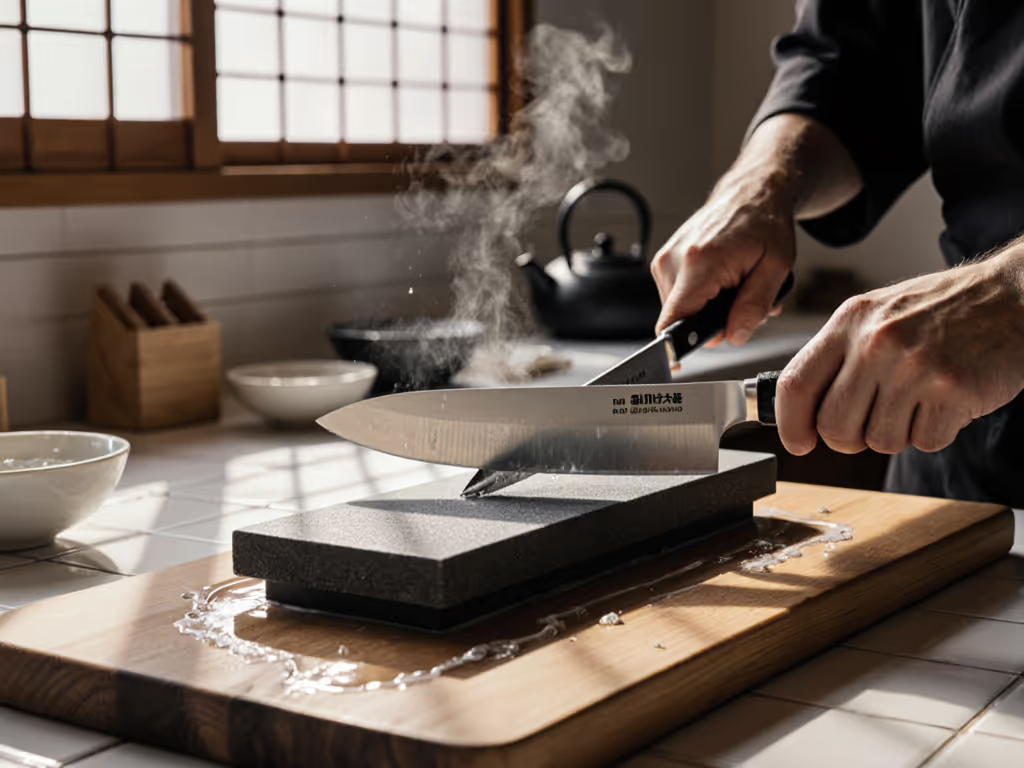
Knife Steel Types: Match Sharpening Methods to Blade Material
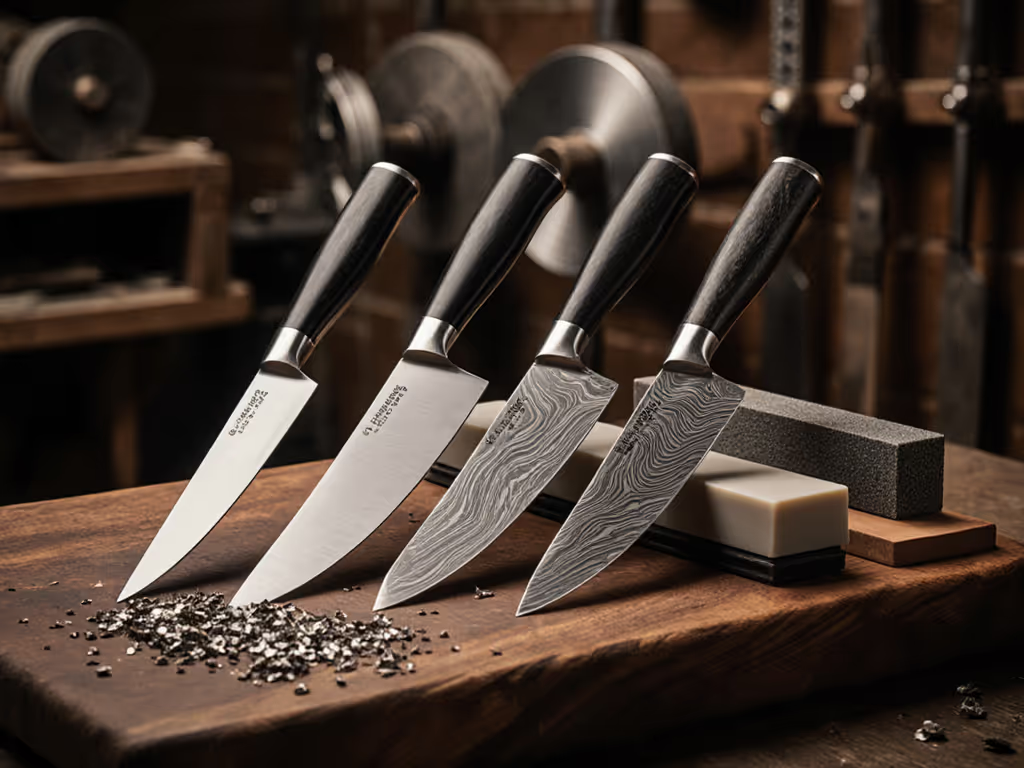
Understanding knife steel types is non-negotiable for achieving professional results in steel sharpening. Each alloy responds uniquely to abrasives, angles, and pressure due to its metallurgical composition. Ignoring these differences guarantees inconsistent edges, premature wear, or catastrophic damage to expensive blades. Mastery begins by recognizing that steel isn't inert (it communicates through tactile and acoustic feedback during sharpening). This FAQ distills objective principles for aligning technique to material, eliminating guesswork in your workflow. Control the angle, control the outcome (steel tells the truth).
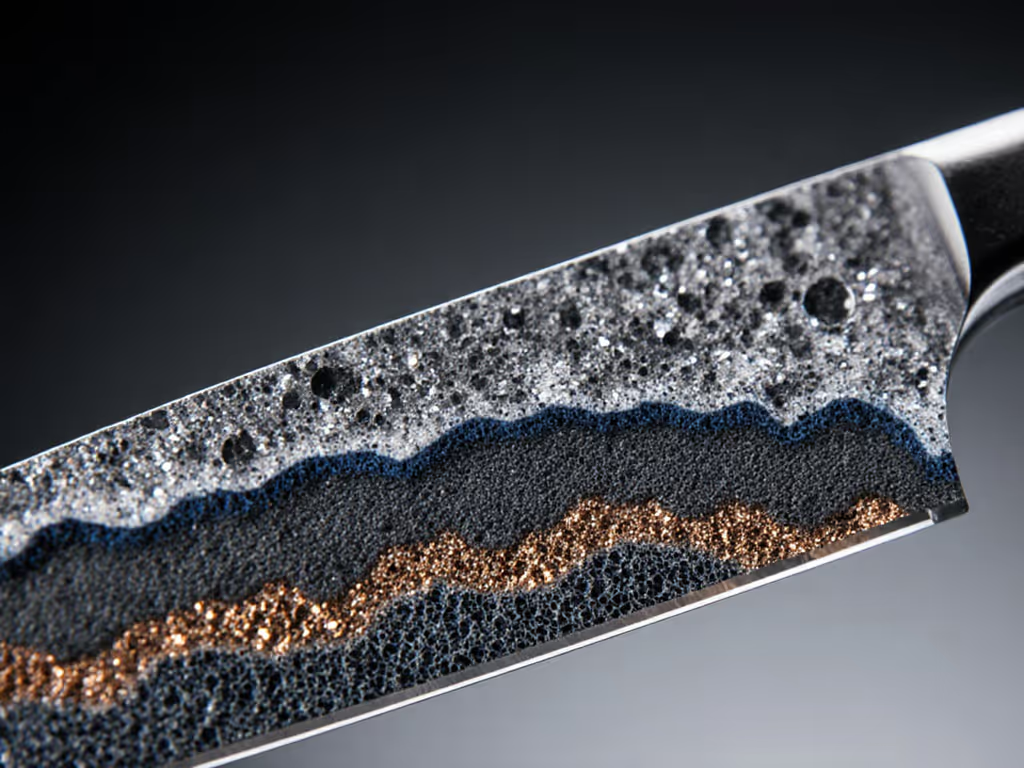
Frequently Asked Questions
Why must I consider knife steel types when choosing a sharpening method?
Knife steel types dictate fundamental sharpening parameters because their hardness, carbide structure, and alloying elements directly influence abrasion resistance and edge formation. Steels like 440C (56-58 HRC) with moderate chromium content cut predictably on coarse stones but demand precise angle control to avoid chipping. Conversely, super steels such as M390 (60-62 HRC) or ZDP-189 (64-66 HRC) contain dense vanadium carbides that resist traditional abrasives, requiring finer grits and slower progression. A recent study by the Cutlery Institute confirmed that mismatched methods on high-carbide steels increase apex damage by 300%. Always prioritize steel-specific feedback cues over universal "one-stone" claims. Your technique must adapt to the material's language, not the reverse.
How does steel hardness (HRC) affect the sharpening process?
Hardness, measured on the Rockwell C scale, directly correlates with the force required to abrade steel and form a burr. Softer steels (below 58 HRC, like AUS-8) yield readily to coarse stones but sacrifice edge retention; harder alloys (60+ HRC) resist abrasion, demanding finer stones and extended pressure. Crucially, hardness alone is insufficient, carbide size matters equally. ZDP-189's extreme hardness (64+ HRC) stems from massive carbides that fracture if pressured with coarse diamonds, creating micro-chips. For optimal sharpening of steel above 60 HRC, I use checkpoint-driven progression: 1,000 grit to establish the bevel, then 3,000 to 8,000 grit with lighter pressure to raise a clean burr. For a deeper dive into each stage, read our grit progression guide. Remember: harder steel requires more strokes but less force per stroke. Track this through consistent burr formation, if it shreds or disappears intermittently, your pressure exceeds the steel's tolerance.
What are the critical differences in sharpening stainless versus carbon steel?
Stainless steels (e.g., VG-10, 154CM) rely on chromium for corrosion resistance but develop complex carbide structures that complicate stainless steel maintenance during sharpening. They require thorough rinsing between grits to prevent chromium-rich slurry from embedding microscopic rust sites. Carbon steels (like 1095) lack chromium, so they abrade faster but demand immediate oiling post-sharpening to avoid flash-rust. Crucially, stainless steels often exhibit "stickiness" on coarse stones, a tactile cue signaling carbide interaction. When sharpening stainless, reduce stroke speed by 20% and monitor for clogging; if the stone darkens prematurely, switch to honing compound. Carbon steel rewards consistency: maintain exact angles as it cuts cleanly, but never skip the final de-burring pass, as its softer matrix easily forms ragged burrs.
How should I adjust technique for super steels like M390 or S90V?
Super steels demand radical adjustments: treat them as delicate despite their hardness. Begin with a 1,000-grit synthetic stone (never diamond plates) to avoid tearing carbides. Apply less pressure than you'd use for softer steel, just enough to maintain stone-blade contact. For M390, focus on edge-leading strokes (pulling toward the apex) to minimize carbide fracture; for ZDP-189, switch to 2,000+ grit immediately after bevel setting since coarse stones catch its brittle carbides. The critical checkpoint is burr formation: it must be continuous and uniform (no skipped sections). If you feel intermittent resistance, rotate the blade slightly to realign your angle. Expect 2 to 3x more strokes than 440C to raise a clean burr, but this investment yields edges lasting 50% longer. Never skip the 8,000-grit polish; it compresses micro-fractures invisible to the eye.
Can I safely sharpen ceramic knives with steel-focused methods?
Absolutely not (and this is where blade metallurgy basics prevent irreversible damage). Ceramic knives (e.g., Kyocera) use zirconium oxide, which is 3x harder than steel but extremely brittle. Standard sharpening stones or guided systems will shatter their edges. Ceramic knife care requires diamond-coated tools with 600+ grit specifically designed for ceramics. Even then, pressure must be feather-light (0.5 kg max) and strokes kept short to avoid leverage-induced breaks. Crucially, ceramic edges lack the plasticity to form a burr; instead, monitor for a consistent, mirror-like polish along the apex. For safety, dedicate a separate sharpening station to ceramics to prevent accidental cross-contamination of abrasives. If your knife wasn't designed for ceramic sharpening, consult the manufacturer; improper attempts often destroy the blade.
What are the most reliable feedback cues for verifying a proper edge?
Feedback is the teacher; the stone is honest. For all steel types, prioritize three measurable cues:
- Burr continuity: Run a fingernail perpendicular to the edge at 1 cm intervals. A consistent catch confirms full bevel contact.
- Acoustic shift: On coarse stones, listen for a smooth "shhh" sound replacing initial scraping.
- Tactile resistance: A uniform drag (not sticky or slippery) indicates even abrasion.
When sharpening becomes reliable, you'll feel the weight change as the burr forms, like silk catching on skin.
For super steels, add visual verification: inspect the apex under 10x magnification for a bright, uninterrupted line. Never trust time-based metrics; your steel's response trumps arbitrary stroke counts. This is where I recall a Saturday spent on 1k stone with a worn blade: chasing that whisper-thin burr transformed my understanding. Consistency over speed isn't philosophy, it's physics.
Further Exploration
Mastering knife steel types requires deliberate practice with clear feedback loops (not mythologized tradition or gadget dependencies). Start by labeling your stones for specific steel categories (e.g., "440C+" for 1k stones), and log burr formation times per steel. For deeper study, analyze wear patterns on test strips of 1095 versus S35VN after 50 strokes. Your next step: test one checkpoint-driven progression weekly, focusing solely on burr quality. Observe how the steel answers your technique, it's the only metric that matters. The path to mastery is paved with attention, not haste.

